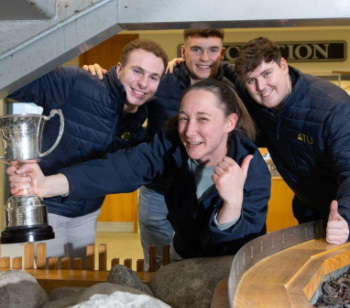Procurement in Construction
Contents |
[edit] Introduction
Construction projects are highly complex, with buyers and sellers often filling multiple roles as project stakeholders. Construction projects have a complex web of different stakeholders: buyers and sellers, owners, clients, contractors or developers - plus an array of specialised vendors like architects engineers and suppliers. Relationships between owners, general contractors, subcontractors and suppliers all exist on varying levels of contractual agreement in order to bring the entire endeavour to a successful completion.
Procurement in construction is conducted to better delegate the performance risk amongst these players who specialise in various fields. The procurement process might be repeated hundreds of times on big scale builds for one organisation alone! Procurement in construction carries with it a substantial financial burden - any missteps can have disastrous implications not just for the project owner, but throughout related hierarchies. To avoid this pitfall, even experienced professionals should ensure their contract management and scope knowledge is up-to-date and compliant with relevant legal standards.
[edit] Contractor’s Perspective
For contractors hoping to land the perfect job, bidding can be an extensive and costly exercise. When a successful bid is placed, contract clauses dictate that both buyers and sellers enter into agreement with one another.
Making sure scope, risk factors cost and time are managed properly during this competitive procurement process requires careful consideration of what products or services should be obtained internally versus externally by subcontractors or tradesmen.
As construction practices evolve there are more opportunities than ever before for contractors to show their mettle; by directing subcontractor activities effectively you can prove yourself capable of tackling even the most ambitious projects!
[edit] Owner’s Perspective
With every new construction project comes a number of factors that can heavily influence the cost, timeline and process. From specialised or hybrid contracting methods to fast-tracking projects for quicker outcomes - there are plenty of opportunities present to make decisions that will ultimately determine success.
Fast tracking is one technique to compress schedules which involves concurrently running design and construction stages- sometimes with design decisions made onsite.
See also: Procurement route.
[edit] Reference
Author(s) : Project Management Institute, Inc. (2016)
Name of publication : Construction Extension to the PMBOK® Guide
Place of publication : Newtown Square, Pennsylvania 19073-3299 USA
Name of publisher : Project Management Institute, Inc.
[edit] Related articles on Designing Buildings
Featured articles and news
Sustainable Urban Drainage and Biodiversity
Awards for champions of these interconnected fields now open.
Microcosm of biodiversity in balconies and containers
How minor design adaptations for considerable biodiversity benefit.
CIOB student competitive construction challenge Ireland
Inspiring a new wave of Irish construction professionals.
Challenges of the net zero transition in Scotland
Skills shortage and ageing workforce hampering Scottish transition to net zero.
Private rental sector, living standards and fuel poverty
Report from the NRH in partnership with Impact on Urban Health.
.Cold chain condensing units market update
Tracking the evolution of commercial refrigeration unit markets.
Attending a conservation training course, personal account
The benefits of further learning for professsionals.
Restoring Alexander Pope's grotto
The only surviving part of his villa in Twickenham.
International Women's Day 8 March, 2025
Accelerating Action for For ALL Women and Girls: Rights. Equality. Empowerment.
Lack of construction careers advice threatens housing targets
CIOB warning on Government plans to accelerate housebuilding and development.
Shelter from the storm in Ukraine
Ukraine’s architects paving the path to recovery.
BSRIA market intelligence division key appointment
Lisa Wiltshire to lead rapidly growing Market Intelligence division.
A blueprint for construction’s sustainability efforts
Practical steps to achieve the United Nations Sustainable Development Goals.
Timber in Construction Roadmap
Ambitious plans from the Government to increase the use of timber in construction.
ECA digital series unveils road to net-zero.
Retrofit and Decarbonisation framework N9 launched
Aligned with LHCPG social value strategy and the Gold Standard.
Competence framework for sustainability
In the built environment launched by CIC and the Edge.
Institute of Roofing members welcomed into CIOB
IoR members transition to CIOB membership based on individual expertise and qualifications.
Join the Building Safety Linkedin group to stay up-to-date and join the debate.
Government responds to the final Grenfell Inquiry report
A with a brief summary with reactions to their response.




























Comments
[edit] To make a comment about this article, or to suggest changes, click 'Add a comment' above. Separate your comments from any existing comments by inserting a horizontal line.